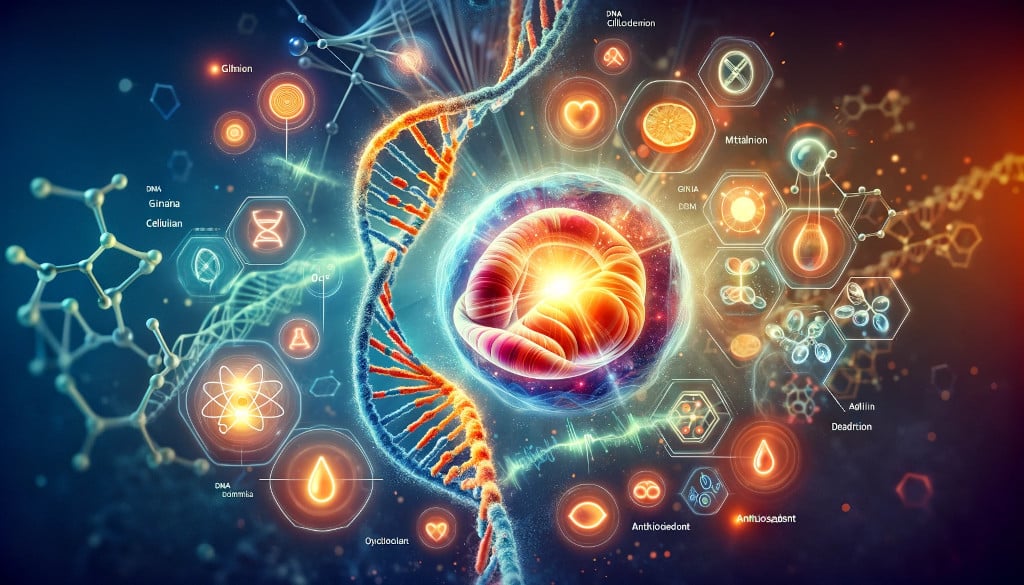Last Updated on July 7, 2024 by Max
Introduction
Recently, red meat has been widely criticized for its supposed role in several prevalent human diseases, including heart disease, colon, and prostate cancer. The cry is common: “Stay away from red meat! Replace it with vegetable proteins!” But is this advice grounded in science, or are we perhaps misinterpreting data similarly to the unfounded vilification of eggs, which led to grocery shelves teeming with cereal substitutes?
In this article, I aim to highlight the concerns surrounding meat consumption and prostate cancer. What kind of meat, if any, contributes to the risk of prostate cancer and why?
The Historical Significance of Meat in the Human Diet
There is no dispute that meat, an essential component of the human diet for millions of years, has played a significant role in our evolution as omnivores. However, over the last century, we have seen a surge in lifestyle diseases linked to modernization and technology, such as heart disease and various cancers. Is it reasonable to criticize a food source crucial for our sustenance and health throughout history?
Instead of stigmatizing meat and attempting to expel it from our diets, we should scrutinize how we rear our livestock, process our meat, and, ultimately, how we consume it. How has this ancient, nutrient-dense food become vilified?
Understanding Meat
Let’s explore some facts about meat, its nutritional value, and how it compares to plant foods. Red meat encompasses beef, pork, lamb, goat, and certain poultry parts, while white meat generally refers to chicken and turkey breasts. Red meat, richer in nutrients than white meat, contains a higher fat content, minerals, and vitamins. Interestingly, all types of meat, including fish, red, and white meat, have a similar cholesterol content. Increasingly, research is debunking the notion that dietary meat, fat, and cholesterol are the culprits behind heart diseases.
Meat provides all the nutrients our bodies need, balanced in ideal proportions. Our digestive systems have evolved to process animal foods primarily. We can efficiently digest meat without bacterial assistance, which is often required for plant foods, and can lead to side effects like bloating and gas.
Out of the 20 amino acids that serve as protein building blocks, we can only produce 11 within our bodies. The remaining nine essential amino acids must be obtained from our diet. Both animal and plant foods provide these amino acids, but the proportions differ. Meat offers all essential amino acids, making it a complete protein source, while plant foods often contain “incomplete” proteins and are more challenging to digest and absorb.
Meat’s bioavailability of most vitamins and minerals surpasses that of plant sources—only animal food supplies vitamins B12, K2, D3, Docosahexaenoic Acid, Creatine, and Taurine.
Digestibility refers to the proportion of ingested food that becomes available for absorption in our bodies as nutrients: proteins (amino acids), fats (triglycerides and cholesterol), carbohydrates (sugars), water, vitamins, and minerals. As per the Mayo Clinic, digesting red meat can take 24-72 hours, depending on an individual’s health.
It’s essential to note that while meat, particularly red meat, is nutrient-dense, moderation and variety in dietary choices remain paramount for optimal health. The following sections delve into the meat-prostate cancer connection. Is there a direct link? Let’s explore this.
Evidence-Based Studies: Does Meat Consumption Lead to Prostate Cancer?
As explored in the previous post, “Prostate Cancer: A Confluence of Genes, Lifestyle, and Age,” when examining the food risks associated with the onset of prostate cancer, the critical criteria must be the food’s carcinogenic potential.
Heterocyclic Amines (HCAs) and Their Link to Prostate Cancer
Heterocyclic amines (HCAs) are carcinogenic compounds in meats cooked at high temperatures. In the United States, chicken is the primary source of HCAs in the diet. A study examined the five most prevalent HCAs (IQ, MeIQ, MeIQx, DiMeIQx, and PhIP) in skinless chicken breasts cooked using various methods: pan-frying, oven-broiling, grilling, or barbecuing to varying degrees of doneness (just until done, well-done, or very well done). Whole chickens were also roasted or stewed.
High levels of PhIP, a known carcinogen linked to colon and breast cancers in rodents and humans, were detected in the chicken breasts irrespective of the cooking method. Moreover, its concentration escalated with the level of doneness. Interestingly, PhIP was absent in whole roasted and stewed chickens, indicating that specific cooking methods contribute to the formation of PhIP. The levels of PhIP found in chicken significantly exceeded those reported in red meat.
Post-Diagnostic Consumption of Chicken and Prostate Cancer Risk
According to a study, post-diagnostic chicken consumption with skin has been associated with a 2.26-fold increase in cancer progression risk. The National Cancer Institute suggests that the mutagenicity of well-done, broiled chicken cooked and consumed with skin is three times as much as when prepared the same way but without the skin.
Red Meat, Poultry, Eggs, and Prostate Cancer Risk
Another research analyzed the link between the consumption of unprocessed and processed red meat, poultry, and eggs and the risk of lethal prostate cancer in ostensibly healthy men and those diagnosed with prostate cancer. The study tracked 27,607 men from 1994 to 2008.
The study found a notable positive correlation between egg intake and the risk of lethal prostate cancer. Consuming 2.5 or more eggs per week was suspected to lead to an 81% higher risk of lethal prostate cancer than consuming less than half an egg per week. However, contrasting results were obtained in two other studies: one found no difference in prostate cancer deaths between those consuming seven eggs per week and those consuming less than one egg per week, and a study from the Netherlands discovered that a 20 g increase in daily egg consumption reduced the risk of advanced prostate cancer by 30%.
Surprisingly, the study revealed an inverse association with unprocessed red meat, whereas poultry and processed red meat exhibited no correlation with the risk of lethal prostate cancer. Additionally, no link was found between the intake of total red meat (unprocessed or processed), whole poultry, and eggs after diagnosis and the risk of progression to lethal prostate cancer.
A combined analysis of prospective studies (up to 2010) on red and processed meat intake and prostate cancer reported no correlation. Therefore, if any connection exists, it is negligible.
What Else Do We Get When We Buy Meat?
The repercussions of consuming meat don’t stop at possible carcinogens; it is essential to consider additional factors like pesticides and hormones in meat products. These can significantly impact our health, leading to potentially harmful effects such as prostate cancer.
Pesticides in Meat and Prostate Cancer
According to the National Health and Nutrition Survey, the majority of the U.S. population exhibits detectable levels of various pesticides in their urine, primarily due to the intake of pesticide-treated food. While pesticides are used across agricultural, commercial, and residential environments, their long-term impact on human health remains largely unexplored, particularly in low doses.
Let’s consider a few pesticides from a list for which post-market examination confirmed prostate carcinogenicity:
- DDT- Insecticide
- Chlordecone- Insecticide
- Fonofos- Insecticide
- Lindane- Herbicide
- Simazine- Herbicide
- Butylate- Herbicide
- DDT (Insecticide): DDT was in public use in the U.S. from 1945 to 1972, during which an estimated 1.8 million tonnes were produced globally. Despite its ban, DDT can persist in the soil for up to 60 years. It has toxic effects on almost all animals, including humans, and mainly affects birds due to its accumulation in the food chain. As an endocrine disruptor, DDT can cause numerous health problems, including spontaneous abortions, preterm birth, and disruption in semen quality. Various studies have demonstrated its significant correlation with prostate cancer risk, leading to its classification as a probable human carcinogen by the International Agency for Research on Cancer in 2015.
- Chlordecone (Insecticide): Chlordecone, an estrogenic insecticide, was widely used for over 30 years before being banned. One study found a direct correlation between prostate cancer risk and plasma Chlordecone concentration, supporting the hypothesis that estrogens increase the risk of prostate cancer.
Many studies associate pesticide use with prostate cancer, emphasizing the potential long-term effects of these chemicals. These pesticides bioaccumulate from soil to crops, animals, and humans at each stage, leading to potential health risks.
Hormones in Red Meat and Prostate Cancer Risk
Red meat and dairy products produced in the U.S. are known to contain natural sex hormones (estrogen, progesterone, testosterone) and synthetic sex hormones (zeranol, trenbolone, melengestrol). These steroids enhance milk production and carcass weight, resulting in increased profits.
However, the health cost for consumers could be significant. Since 1975, there has been a marked increase in reproductive cancers in the U.S.: a 60% increase for prostate cancer, 59% for testicular cancer, 10% for breast cancer, and 38% for childhood cancer. The risk of breast cancer for American women is five times higher than that for women in countries that have banned the use of hormones in animal feed.
Many countries, including those in the European Commission, Canada, Australia, New Zealand, and Israel, banned the production and importation of meat from animals treated with hormones as early as the 1980s. Despite claims by the U.S. Food and Drug Administration (FDA) and the U.S. Department of Agriculture (USDA), residues of these hormones in meat are reported to be up to 20-fold higher than normal.
In addition, environmental pollution with estrogens and estrogen-mimicking compounds, xenoestrogens, may contribute to the global decline of male reproductive function and a progressive feminization of the animal world, including humans.
In summary, understanding the potential health risks associated with consuming meats treated with pesticides and hormones is crucial. It’s essential to consider the long-term impacts of these factors on our health and the environment.
Processed Meat and Increased Risk of Prostate Cancer
Processed meats like ham, bacon, and other preserved or cured meats are widely consumed across the globe. However, the health implications of such foods have been under constant debate.
In 2015, the World Health Organization (WHO) classified processed meat as a Group I carcinogen (the same as cigarettes) and red meat as a Group 2A carcinogen, meaning it’s probably carcinogenic to humans. This decision was made by the International Agency for Research on Cancer, composed of 22 scientists from ten countries, after evaluating over 800 studies. The conclusion was primarily based on evidence linking these meats to colorectal, stomach, pancreatic, and prostate cancers.
The American Institute for Cancer Research 2017 suggested that the daily consumption of 50 grams of processed meat (roughly one hot dog) increases the risk of colon cancer by 16%. The study also showed evidence that physical activity could protect against colon cancer.
While WHO’s recommendations to limit or eliminate the consumption of red and processed meat are based on data from epidemiological studies, which always have certain limitations, it’s important to remember the old saying, “There is no smoke without fire.” Processed meat, particularly red meat, contains chemicals that induce animal tumors.
Charring and wood-smoking meat form polycyclic aromatic hydrocarbons (PAHs) and heterocyclic amines (HCAs), which have been shown to cause cancer in laboratory animals.
Moreover, meat processing methods, such as curing nitrates, nitrites, and salt, can form potentially carcinogenic substances like N-nitroso-compounds (NOCs). Red meat, unlike white meat, contains heme iron, which can facilitate the production of NOCs. Even though the reaction leading to NOCs can be mitigated by adding antioxidants, it doesn’t entirely halt NOCs formation. Therefore, choosing fresh beef whenever possible could be a healthier alternative.
The Role of Gut Bacteria in Prostate Cancer
While there is limited evidence directly linking gut bacteria metabolism and prostate cancer, numerous studies suggest that gut flora impacts the incidence of colorectal cancer, and there’s a noted linear association between prostate cancer and colorectal cancers. This may imply a connection between gut bacteria and prostate cancer risk, although more research is needed to confirm this link.
Gut Bacteria and Meat Consumption
The gut system of any animal species, from insects to humans, houses many bacteria. While the stomach and small intestine harbor fewer species, the colon is densely populated with more than 500 species. Bacteria can account for up to 60% of the dry mass of feces.
Sulfate Reduction
Sulfate-reducing bacteria (SRB), a normal part of the gut flora, stimulate the immune response in the gut. However, when their numbers drastically increase, they can contribute to the development of colitis mediated by hydrogen sulfide (H2S) production. Hydrogen sulfide is a harmful gas with a “rotten egg” smell that can damage genomic DNA, causing genotoxic effects in gut cells. Meat proteins are rich in sulfur-containing amino acids, and a meat-based diet may result in an abundance of SRB, contributing to H2S formation and increasing the risk of colorectal cancers.
Nitrate Reduction
Some bacteria species in the gut can reduce nitrates to nitrites via nitrate reductase. The subsequent interaction of nitrites with organic substances produces carcinogenic N-nitroso-compounds (NOCs). Red and processed meat, rich in protein and other nitrogenous residues, may support increased production of NOCs by gut bacteria. In contrast, white meat and vegetable protein did not increase fecal NOCs.
Heme Iron in Red and Processed Meat
Heme iron, an essential part of hemoglobin and myoglobin, is abundant in red and processed meat and can catalyze NOCs formation, possibly causing additional dose-dependent N-nitrosation in the gut. Including soy in your diet can significantly suppress fecal NOCs.
However, this does not mean we should eliminate meat from our diets. Instead of discouraging meat consumption entirely, more research is needed to understand lifestyle conditions that allow us to enjoy meat without adverse health implications.
Conclusion
Technological revolution and scientific development over the last century have opened new agricultural doors. However, these “innovations” often interfere with nature’s course, potentially contributing to the surge of heart diseases, various types of cancer, and other disorders in humans and animals. Moreover, lifestyle changes, including more sedentary habits, increased obesity rates, anxiety, and stress, could play a role in these health issues.
Our knowledge and awareness now place us at a crossroads: should we abandon meat and other traditional food items in favor of a new lifestyle, or should we strive to maintain a balanced diet and lifestyle, allowing us to continue enjoying these foods while mitigating their potential harm? This crucial decision lies in our hands.
References
- Rashmi S. et al., High Concentrations of the Carcinogen 2-Amino-1-methyl-6-phenylimidazo-[4,5-b]pyridine (PhIP)
Occur in Chicken but Are Dependent on the Cooking Method. Cancer Res. 1995 Oct 15;55(20):4516-9. - Erin L. R et al., Egg, Red Meat, and Poultry Intake and Risk of Lethal Prostate Cancer in the Prostate-Specific Antigen-Era: Incidence and Survival. Cancer Prev Res; 4(12); 2110–21. ©2011 AACR.
- National Cancer Institute. CHARRED: Computerized heterocyclic amines resource for research in
epidemiology ofdisease . 2006. - Alexander DD, et al. A review and meta-analysis of prospective studies of red and processed meat intake and prostate cancer. Nutr J 2010;9:50.
- Schuurman AG, van den Brandt PA, Dorant E, Goldbohm RA. Animal products, calcium and protein
and prostate cancer risk in The Netherlands Cohort Study. Br J Cancer 1999;80:1107–13. - Alavanja MC, Bonner MR. Occupational pesticide exposures and cancer risk: a review. J Toxicol Environ Health B Crit Rev. 2012;15(4):238-63.
- Meredith A. J. et al. Gut Microbes, Diet, and Cancer. Cancer Treat Res. 2014; 159: 377–399.







Thank you for sharing this information with us. I have 3 boys and we need to know what can we do for their health. We love meat more than vegetables, but now we know we have to take care about which kind of meat we consuming choosing the right meat producer.
Thank you and I wish you all the best
Thank you so much for your comment.
Unfortunately, most of the health issues we face at 50-60s are founded at the younger ages. And in this regard, I believe parents are responsible for the health of their kids when they get older. We need animal proteins, particularly at a young age, for the harmonious development of all body systems, and in our hands in which form we are feeding it to our children.
To raise your awareness about possible health issues in the adolescents
I would recommend reading my post “Testicular varicocele – a hidden enemy of man”: https://yourhealthyprostate.com/testicular-varicocele-a-hidden-enemy-of-man/
Wishing you the best health
Makhsud
Good article ///thanks for sharing
Thank you for stopping by and commenting.
Take care
Makhsud
A great article Makhsud very well explained and also close to my feelings on what we should consume ..I believe a healthy balanced diet with as you say regard to how our food is produced and what is introduced to that food during its growth period…Is the way forward for a healthy body.
Thank you, Carol, for the comment. It’s always a pleasure to meet people sharing your points of view.
Take care
Max
Great article Doc.
It is important to take a closer look at what things we put into our bodies. As with medications and remedies, our bodies are unique and what might work for one may work differently for others. Is there a certain test that can be done to identify what precautions should be taken? I never liked being a guinea pig to discovery what drug works best.
Thanks for sharing. Very informative and educational.
Thank you, Mark, for the comment. By and large, people become experimental objects against their will. Extensive use of pesticides, hormones, fertilizers, and antibiotics, when viewed from a historical perspective, is human experimentation. And what is most confusing is the fact that few points to the true culprits, while everyone is trying to find the cause in meat, bread, butter, eggs, and other natural foods of man.
Aloha Makhsud!
I was looking for good information about the balanced and healthy consumption of meat and found your article. My husband is a pronounced meat eater. He would define a meatless dish as “not proper food.” I tend rather to eating more vegetables and fruit than meat. But of course, my husbands eating habits influence the food I eat too. There are numerous studies about healthy food and its interplay regarding our health. But what questions do they really answer?
I was aware of the fact that high meat consumption leads to high acidity in the body that in turn has a big impact on many different processes in the body.
Your article was one of the best I have read for a long time. I was impressed by the variety of perspectives you took into consideration, like the meat contamination with a different type of toxins (i. e. pesticides, hormones, and others) or antibiotics. But also the conditions of growing and producing meat – the way the animals spend their lifetime until they land in a pan. And last but not least the different types of meat regarding their place in the body.
After reading your article I think that there is nothing wrong with eating meat if the meat is produced in healthy conditions including sunlight, fresh food, fresh air, kindness, good and healthy food, and water.
The meat consumption should be in balance with other kinds of food like veggies and fruit, grains, nuts and so on. It also should be in alignment with the average daily activity a person performances.
Do you think, Makhsud, that it would be a good way of eating to prevent cancer?
Thank you for the great article and detailed information!
All the best to you!
Aloha, Jenna
Dear Jenna.
I’m so pleased that you found the information you have been looking for on my site. I guess, your husband, like millions of other men, listens to his nature and feeds his body what it likes the best. We men have been created to eat meat. We need it to synthesize testosterone, to feel man, to be ready for risk to defend our families and our homelands. You know that lately there is a trend of global feminization in the world; everywhere estrogen contamination, a spike of man’s diseases, replacement of animal foods with cereals and so on. I do not think that it’s what our female half of humanity is expecting from us. It looks like something or somebody governs this process.
In my understanding lately, we got a lot of bad habits or so-called modern lifestyle, that our body cannot metabolize too much meat properly and creates the conditions that promote illnesses.
No one can tell better: “The meat consumption should be in balance with other kinds of food like veggies and fruit, grains, nuts and so on. It also should be in alignment with the average daily activity a person performances.” Only then the meat will be beneficial for your body, give you energy, joy, and pleasure.
Thank you so much for stopping by and commenting on my post.
Have a great day!
Makhsud